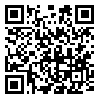2- Master of Clinical Psychology, Tabriz University of Medical Sciences, Tabriz, Iran (٭Corresponding author). Tel: +98 09361176526 Email: clinicalpsychologist.notash@gmail.com
Abstract
Background & Aim: Attention to children’s visual graphics is a way to recognize their inner world. The study aims to compare the components of visual graphic of family members and drawing family members as animals in unaccompanied children and their normal counterparts.
Martial & Methods: It was a descriptive comparative study. The sample consisted of 60, 7-10 year old boys (30 unaccompanied and 30 normal counterparts) who were recruited by simple randomized sampling method in 2013 and were assessed by DAP painting test. Data was analyzed by Chi-square test using SPSS-PC (v. 21).
Results: There were significant differences between the groups in turns of added character, protagonist's parents, removed parents, order in painting, parents as disturbing animals, children as lovable animals and father as predatory animal (P< 0.01). However, there were no significant difference between the groups in turn of drawing mother as sarcastic animals and the use of lovable animals (P> 0. 05).
Conclusion: Differences in the visual graphic characteristics between these two groups would reflect the presence of psychological problems in unaccompanied children. Attention to children’s visual graphic could be considered as a base for assessing their psychological state.Received: 2014/08/26 | Accepted: 2014/11/24 | Published: 2014/11/24
| Rights and permissions | |
 |
This work is licensed under a Creative Commons Attribution-NonCommercial 4.0 International License. |



